Hardcover, 255 x 200 mm, ¾ green morocco over marbled boards, gilt lettering to spine with raised bands, grey laid paper endpapers, Serge Golifman’s bookplate pasted to verso, 3 ffl, orig. wrappers, incl spine, preserved; collated: 2 blanks, h.t., t.p., 14 leaves of text; faux t.p.
Éloge de la marquise de Beausemblant, 6 leaves of text, colophon (limitation), 2 blanks, 3 ffl, unpaginated, plus 7 leaves of plates, incl. frontispiece. Publisher's wrappers 250 x 190 mm.
Title-page (red and black):
PAUL MORAND |
LES PLAISIRS |
RHENANS |
orné de sept lithographies originales |
et coloriées à la main |
DUSSELDORF |
Librairie Leocadia ||
The front wrapper is the same, in black only.
Limitation: Cette édition, imprimée pour une Société de Bibliophiles, a été tirée à 107 exemplaires hors commerce, savoir: exemplaires sur vieux japon, numérotés de 1 à 7, et 100 exemplaires sur vélin d'Arches, numérotés de 8 à 107. Les lithographies ont été tirées sur presse à bras et coloriées à la main. Les pierres ont été poncées après tirage. Exemplaire N° 81. [The edition was printed for a bibliophile society in 107 non-commercial copies: 7 copies on “vieux Japon” paper, numbered from 1 to 7, and 100 copies on “Arches Vellum”, numbered from 8 to 107, of which this is copy № 81].
An unauthorized (pirated) edition of two short stories by Paul Morand, initially published in “
L’Europe galante” by
Éditions Grasset in 1925:
Les plaisirs rhénans and
Éloge de la marquise de Beausemblant; illustrated with 7 lithographs coloured with crayons after Gaston-Louis Roux, printed by Mme Duchatel; the stones were then destroyed (sanded).
According to Pia: « Pour le principe, semble-t-il, Bernard Grasset à qui aucune autorisation d’éditer ainsi ces deux nouvelles n'avait été demandée, déposa une plainte contre X... en contrefaçon. L'enquête judiciaire, si enquête il y eut, n’aboutit pas. Le tirage de l’édition « pirate » avait été si restreint que tous les exemplaires en avaient été vendus sitôt parus. Le coupable, en l’occurrence René Bonnel, ne fut pas inquiété ».
Dutel attests: « Un des personnages, subissant une agréable fellation, représenté sur l'une des lithographies, ressemble fort à Paul Morand qui en avait pris ombrage! »
Comment by the seller: L’ouvrage est d’autant plus rare que Morand lui-même, mécontent d’une des gravures qui le représente en position intéressante, fit détruire une partie des exemplaires.
Resume: While Bernard Grasset opposed the pirated edition on copyright infringement grounds, Paul Morand was enraged by his resemblance to the depicted character; the latter destroyed as many copies of the edition as he could, so only a few still exist. The print run of the "pirate" edition was so limited that all the copies were sold as soon as they were published.
Catalogue Raisonné: Dutel III № 2215 (p. 321) ; Pia : № 1056; Nordmann (I) № 281.
Contributors:
Paul Morand (French, 1888 – 1976) – author
Gaston-Louis Roux (French, 1904 – 1988) – artist
René Bonnel (French, 18841 – 1975) – publisher
Bernard Grasset (French, 1881 – 1955) – publisher
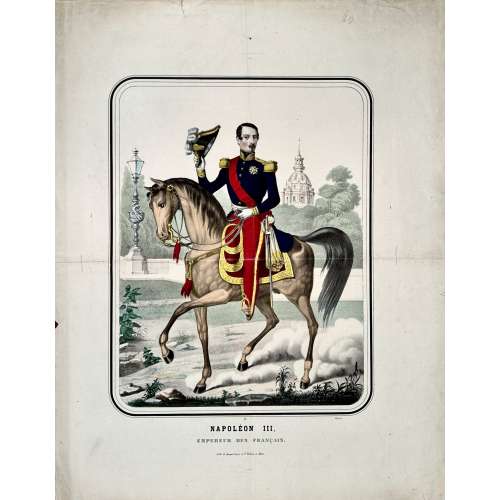 Hand-coloured chromolithography on wove paper, 600 x 470 mm; black ink stamp “4921” to reverse, horizontal and vertical centrefolds. Image of Napoléon III on horseback, in a frame; lettering under the frame: 34 — Déposé | NAPOLÉON III | EMPEREUR DES FRANÇAIS. | Lith. de Gangel frères et P. Didion, à Metz. || Gangel frères et P. Didion (Metz) – printer/publisher. Paulin Didion (French, 1831 – 1879)
Hand-coloured chromolithography on wove paper, 600 x 470 mm; black ink stamp “4921” to reverse, horizontal and vertical centrefolds. Image of Napoléon III on horseback, in a frame; lettering under the frame: 34 — Déposé | NAPOLÉON III | EMPEREUR DES FRANÇAIS. | Lith. de Gangel frères et P. Didion, à Metz. || Gangel frères et P. Didion (Metz) – printer/publisher. Paulin Didion (French, 1831 – 1879)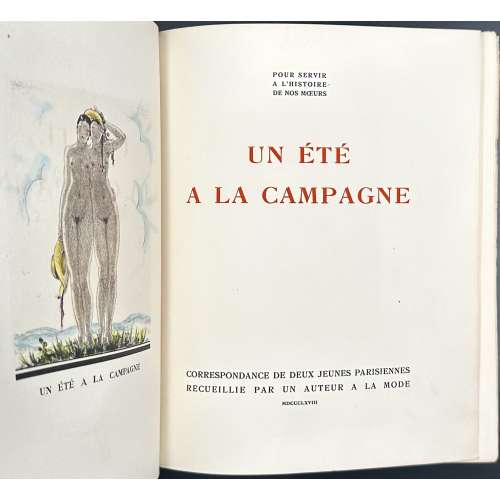 Softcover, 228 x 180 mm, tan French flapped wrappers with red lettering to front[1-4, owner’s glassine dustcover, top edge trimmed, printed on thick wove paper without a watermark; pp.: ffl [1-4 h.t., t.p.] 5-154 [2 blanks] colophon to back ffl recto, plus 12 plates with hand-coloured lithographs, extraneous to collation. Pencil and pigment drawing to h.t. signed “J. D’A” with gift manual inscription “A Monsieur et Madame Chalamel [sic] ce tardif mais sincère souvenir de sympathie”, signed “J et Y D’A.” Etching bookplate to front ffl recto: “EX LIBRIS PIERRE CHALLAMEL | JE FONCE DANS LE BROUILLARD”, signed “J A M” (Jean-Adrien Mercier). The signature J. D’A stands for Jean d’Angers, while Y D’A stands for Jean-Adrien’s wife Yvonne (1902—1999), nicknamed Zizi; they married in 1927. According to J.-P. Dutel, the stated illustrator of this edition, Jean d’Angers is indeed Jean-Adrien Mercier. The text belongs to Gustav Droz and, possibly, Auguste Poulet-Malassis. Limitation: the book was printed for subscribers in 30 copies on Japon Impériale paper (№№ 1-30) and 250 copies on vélin du Marais paper (№№ 31-280). This copy bears № 123 and was presented as a gift by the artist and his wife to Pierre Challamel. Title-page (red and black): POUR SERVIR | A L'HISTOIRE | DE NOS MŒURS | UN ÉTÉ | A LA CAMPAGNE | CORRESPONDANCE DE DEUX JEUNES PARISIENNES | RECUEILLIE PAR UN AUTEUR A LA MODE | MDCCCLXVIII || Catalogue raisonné: Dutel III № 2546; honesterotica. Provenance: Pierre Challamel (French, 20th century) Contributors: Gustave Droz (French, 1832 – 1895) – author (presumable). Auguste Poulet-Malassis (French, 1825 – 1878) – author (presumable). Jean-Adrien Mercier (French, 1899 – 1995) – artist. Micro photo of the lithography:
Softcover, 228 x 180 mm, tan French flapped wrappers with red lettering to front[1-4, owner’s glassine dustcover, top edge trimmed, printed on thick wove paper without a watermark; pp.: ffl [1-4 h.t., t.p.] 5-154 [2 blanks] colophon to back ffl recto, plus 12 plates with hand-coloured lithographs, extraneous to collation. Pencil and pigment drawing to h.t. signed “J. D’A” with gift manual inscription “A Monsieur et Madame Chalamel [sic] ce tardif mais sincère souvenir de sympathie”, signed “J et Y D’A.” Etching bookplate to front ffl recto: “EX LIBRIS PIERRE CHALLAMEL | JE FONCE DANS LE BROUILLARD”, signed “J A M” (Jean-Adrien Mercier). The signature J. D’A stands for Jean d’Angers, while Y D’A stands for Jean-Adrien’s wife Yvonne (1902—1999), nicknamed Zizi; they married in 1927. According to J.-P. Dutel, the stated illustrator of this edition, Jean d’Angers is indeed Jean-Adrien Mercier. The text belongs to Gustav Droz and, possibly, Auguste Poulet-Malassis. Limitation: the book was printed for subscribers in 30 copies on Japon Impériale paper (№№ 1-30) and 250 copies on vélin du Marais paper (№№ 31-280). This copy bears № 123 and was presented as a gift by the artist and his wife to Pierre Challamel. Title-page (red and black): POUR SERVIR | A L'HISTOIRE | DE NOS MŒURS | UN ÉTÉ | A LA CAMPAGNE | CORRESPONDANCE DE DEUX JEUNES PARISIENNES | RECUEILLIE PAR UN AUTEUR A LA MODE | MDCCCLXVIII || Catalogue raisonné: Dutel III № 2546; honesterotica. Provenance: Pierre Challamel (French, 20th century) Contributors: Gustave Droz (French, 1832 – 1895) – author (presumable). Auguste Poulet-Malassis (French, 1825 – 1878) – author (presumable). Jean-Adrien Mercier (French, 1899 – 1995) – artist. Micro photo of the lithography: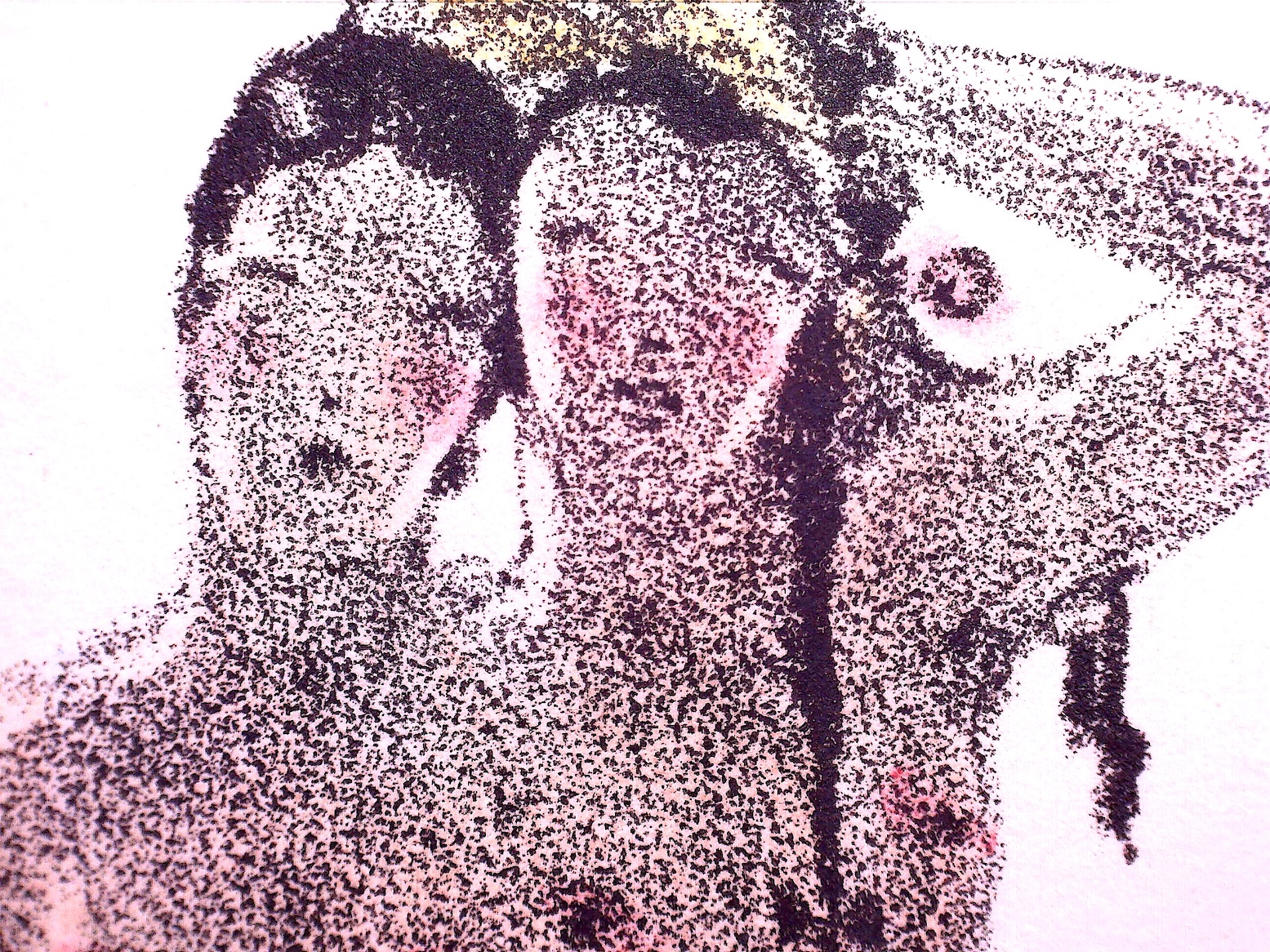
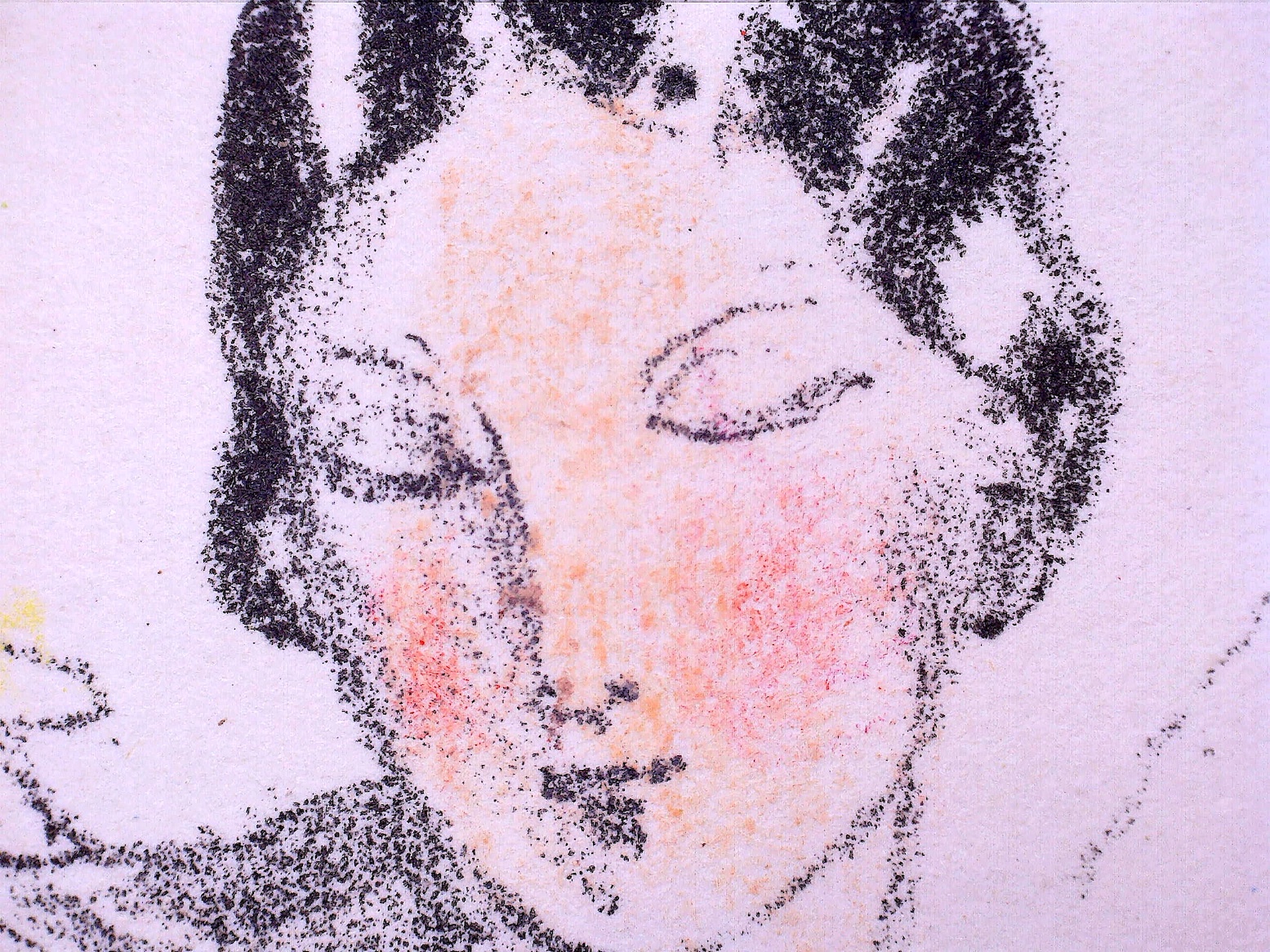
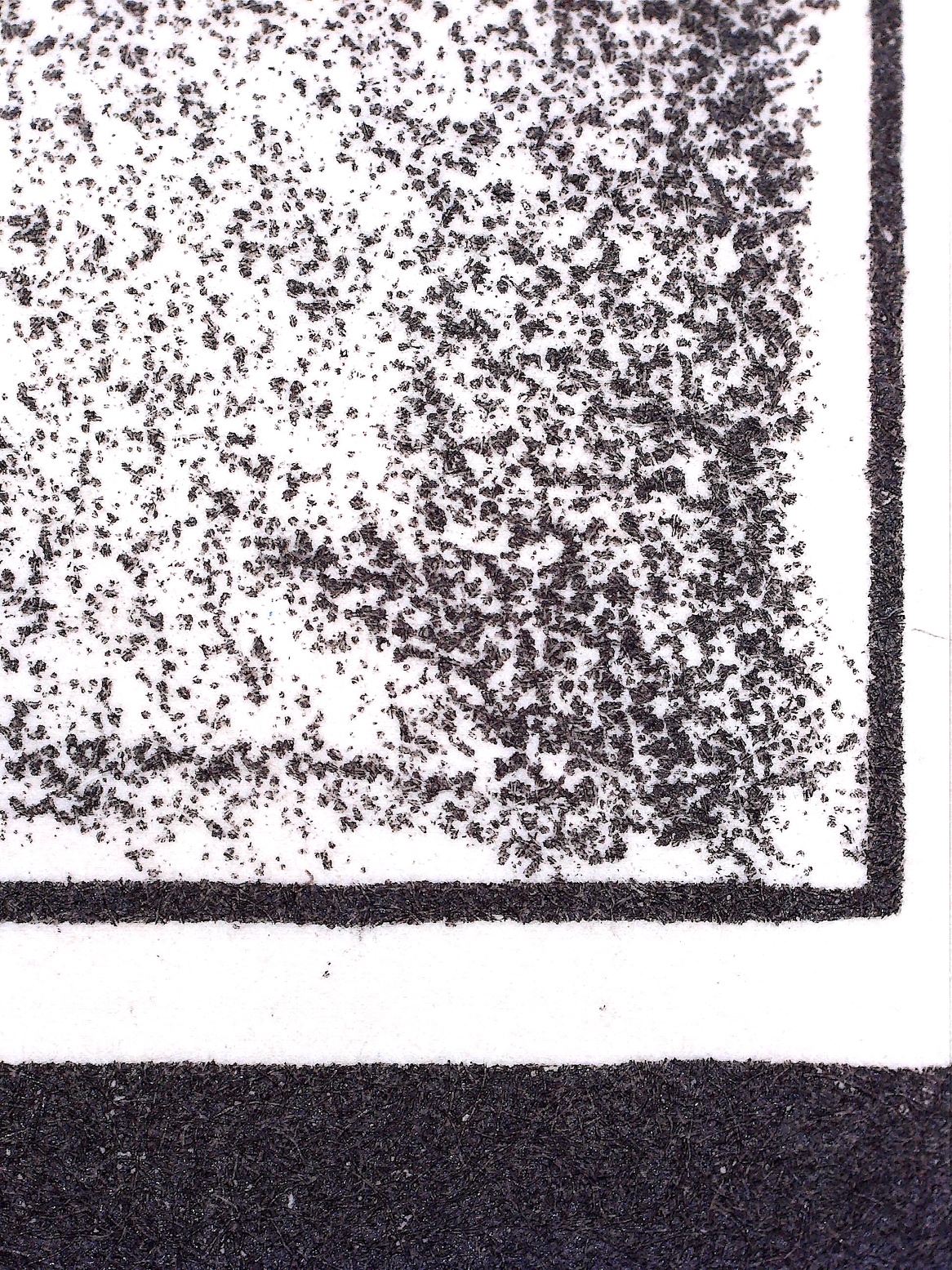
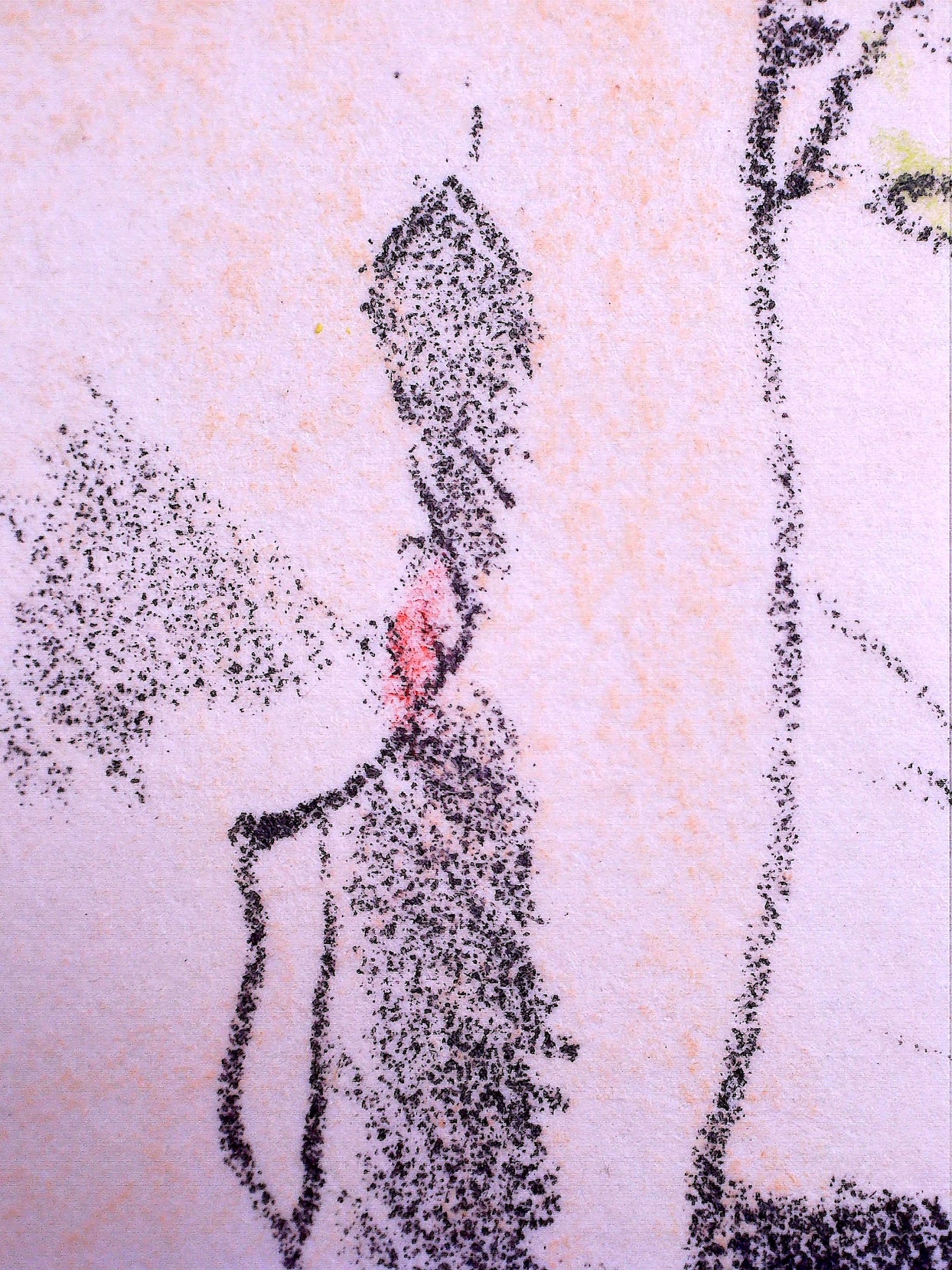
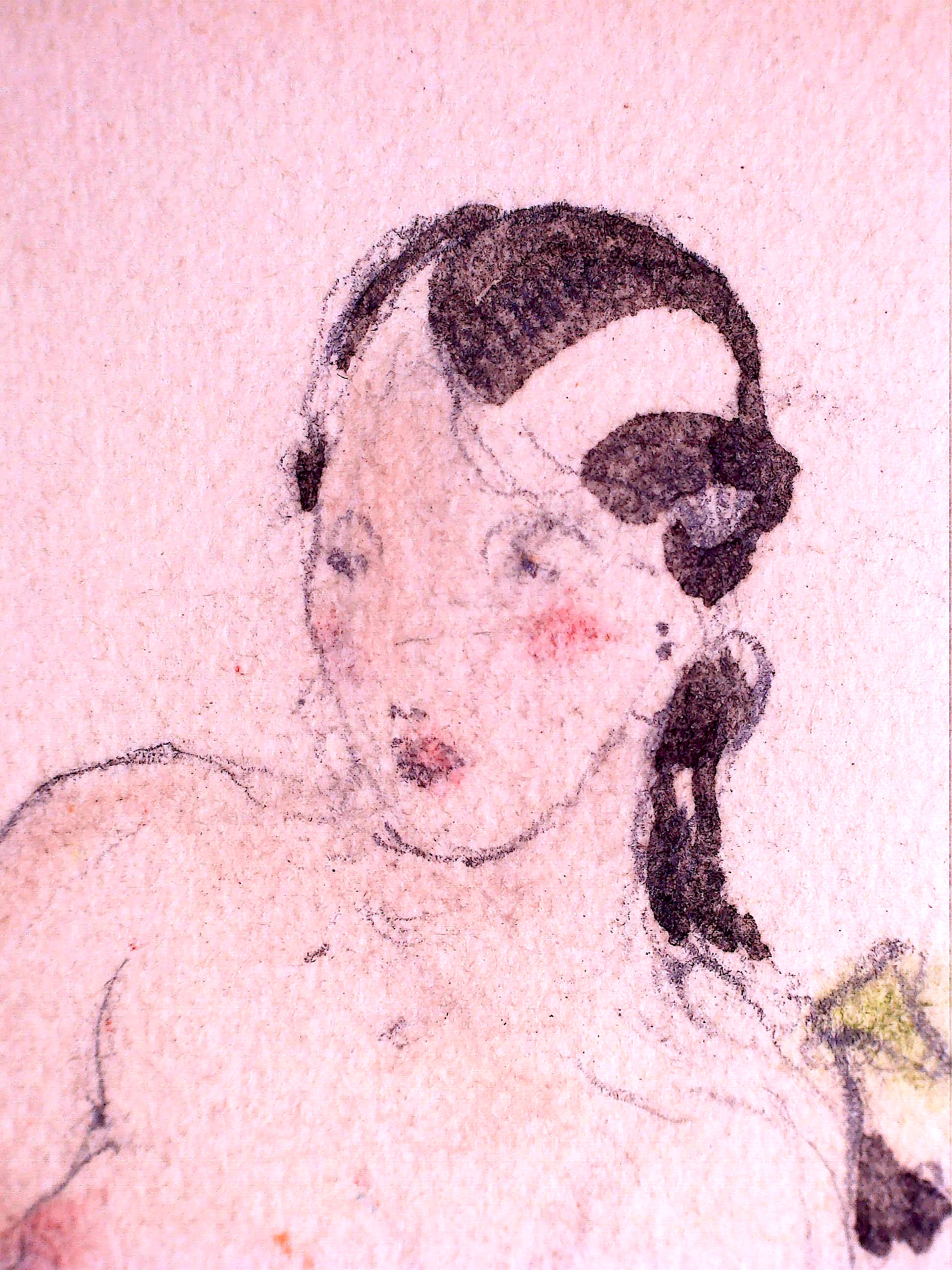
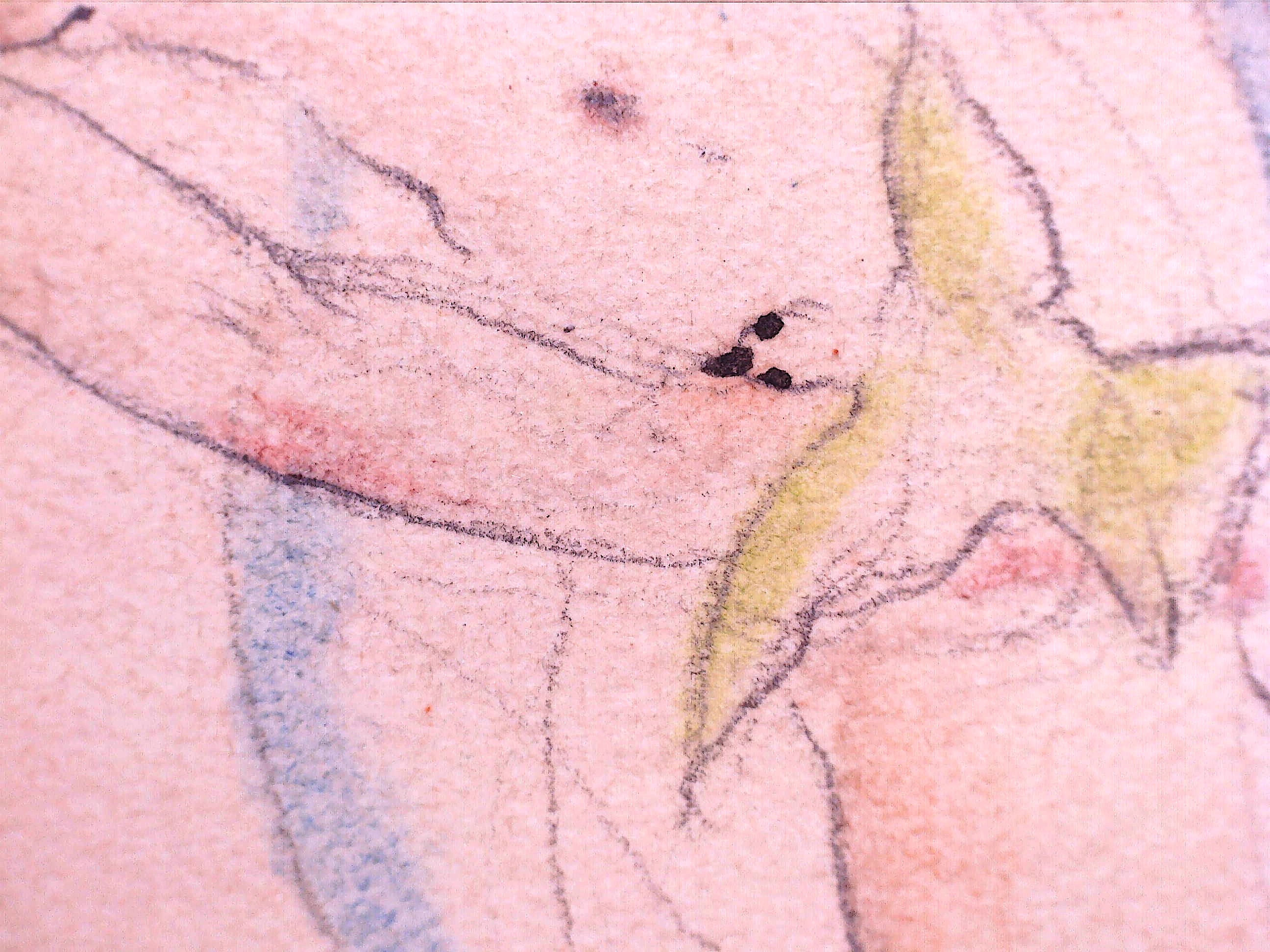
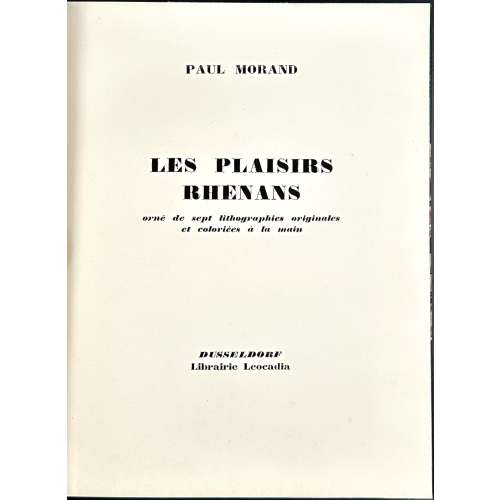 NEWHardcover, 255 x 200 mm, ¾ green morocco over marbled boards, gilt lettering to spine with raised bands, grey laid paper endpapers, Serge Golifman’s bookplate pasted to verso, 3 ffl, orig. wrappers, incl spine, preserved; collated: 2 blanks, h.t., t.p., 14 leaves of text; faux t.p. Éloge de la marquise de Beausemblant, 6 leaves of text, colophon (limitation), 2 blanks, 3 ffl, unpaginated, plus 7 leaves of plates, incl. frontispiece. Publisher's wrappers 250 x 190 mm. Title-page (red and black): PAUL MORAND | LES PLAISIRS | RHENANS | orné de sept lithographies originales | et coloriées à la main | DUSSELDORF | Librairie Leocadia || The front wrapper is the same, in black only. Limitation: Cette édition, imprimée pour une Société de Bibliophiles, a été tirée à 107 exemplaires hors commerce, savoir: exemplaires sur vieux japon, numérotés de 1 à 7, et 100 exemplaires sur vélin d'Arches, numérotés de 8 à 107. Les lithographies ont été tirées sur presse à bras et coloriées à la main. Les pierres ont été poncées après tirage. Exemplaire N° 81. [The edition was printed for a bibliophile society in 107 non-commercial copies: 7 copies on “vieux Japon” paper, numbered from 1 to 7, and 100 copies on “Arches Vellum”, numbered from 8 to 107, of which this is copy № 81]. An unauthorized (pirated) edition of two short stories by Paul Morand, initially published in “L’Europe galante” by Éditions Grasset in 1925: Les plaisirs rhénans and Éloge de la marquise de Beausemblant; illustrated with 7 lithographs coloured with crayons after Gaston-Louis Roux, printed by Mme Duchatel; the stones were then destroyed (sanded). According to Pia: « Pour le principe, semble-t-il, Bernard Grasset à qui aucune autorisation d’éditer ainsi ces deux nouvelles n'avait été demandée, déposa une plainte contre X... en contrefaçon. L'enquête judiciaire, si enquête il y eut, n’aboutit pas. Le tirage de l’édition « pirate » avait été si restreint que tous les exemplaires en avaient été vendus sitôt parus. Le coupable, en l’occurrence René Bonnel, ne fut pas inquiété ». Dutel attests: « Un des personnages, subissant une agréable fellation, représenté sur l'une des lithographies, ressemble fort à Paul Morand qui en avait pris ombrage! » Comment by the seller: L’ouvrage est d’autant plus rare que Morand lui-même, mécontent d’une des gravures qui le représente en position intéressante, fit détruire une partie des exemplaires. Resume: While Bernard Grasset opposed the pirated edition on copyright infringement grounds, Paul Morand was enraged by his resemblance to the depicted character; the latter destroyed as many copies of the edition as he could, so only a few still exist. The print run of the "pirate" edition was so limited that all the copies were sold as soon as they were published. Catalogue Raisonné: Dutel III № 2215 (p. 321) ; Pia : № 1056; Nordmann (I) № 281. Contributors: Paul Morand (French, 1888 – 1976) – author Gaston-Louis Roux (French, 1904 – 1988) – artist René Bonnel (French, 18841 – 1975) – publisher Bernard Grasset (French, 1881 – 1955) – publisher
NEWHardcover, 255 x 200 mm, ¾ green morocco over marbled boards, gilt lettering to spine with raised bands, grey laid paper endpapers, Serge Golifman’s bookplate pasted to verso, 3 ffl, orig. wrappers, incl spine, preserved; collated: 2 blanks, h.t., t.p., 14 leaves of text; faux t.p. Éloge de la marquise de Beausemblant, 6 leaves of text, colophon (limitation), 2 blanks, 3 ffl, unpaginated, plus 7 leaves of plates, incl. frontispiece. Publisher's wrappers 250 x 190 mm. Title-page (red and black): PAUL MORAND | LES PLAISIRS | RHENANS | orné de sept lithographies originales | et coloriées à la main | DUSSELDORF | Librairie Leocadia || The front wrapper is the same, in black only. Limitation: Cette édition, imprimée pour une Société de Bibliophiles, a été tirée à 107 exemplaires hors commerce, savoir: exemplaires sur vieux japon, numérotés de 1 à 7, et 100 exemplaires sur vélin d'Arches, numérotés de 8 à 107. Les lithographies ont été tirées sur presse à bras et coloriées à la main. Les pierres ont été poncées après tirage. Exemplaire N° 81. [The edition was printed for a bibliophile society in 107 non-commercial copies: 7 copies on “vieux Japon” paper, numbered from 1 to 7, and 100 copies on “Arches Vellum”, numbered from 8 to 107, of which this is copy № 81]. An unauthorized (pirated) edition of two short stories by Paul Morand, initially published in “L’Europe galante” by Éditions Grasset in 1925: Les plaisirs rhénans and Éloge de la marquise de Beausemblant; illustrated with 7 lithographs coloured with crayons after Gaston-Louis Roux, printed by Mme Duchatel; the stones were then destroyed (sanded). According to Pia: « Pour le principe, semble-t-il, Bernard Grasset à qui aucune autorisation d’éditer ainsi ces deux nouvelles n'avait été demandée, déposa une plainte contre X... en contrefaçon. L'enquête judiciaire, si enquête il y eut, n’aboutit pas. Le tirage de l’édition « pirate » avait été si restreint que tous les exemplaires en avaient été vendus sitôt parus. Le coupable, en l’occurrence René Bonnel, ne fut pas inquiété ». Dutel attests: « Un des personnages, subissant une agréable fellation, représenté sur l'une des lithographies, ressemble fort à Paul Morand qui en avait pris ombrage! » Comment by the seller: L’ouvrage est d’autant plus rare que Morand lui-même, mécontent d’une des gravures qui le représente en position intéressante, fit détruire une partie des exemplaires. Resume: While Bernard Grasset opposed the pirated edition on copyright infringement grounds, Paul Morand was enraged by his resemblance to the depicted character; the latter destroyed as many copies of the edition as he could, so only a few still exist. The print run of the "pirate" edition was so limited that all the copies were sold as soon as they were published. Catalogue Raisonné: Dutel III № 2215 (p. 321) ; Pia : № 1056; Nordmann (I) № 281. Contributors: Paul Morand (French, 1888 – 1976) – author Gaston-Louis Roux (French, 1904 – 1988) – artist René Bonnel (French, 18841 – 1975) – publisher Bernard Grasset (French, 1881 – 1955) – publisher

